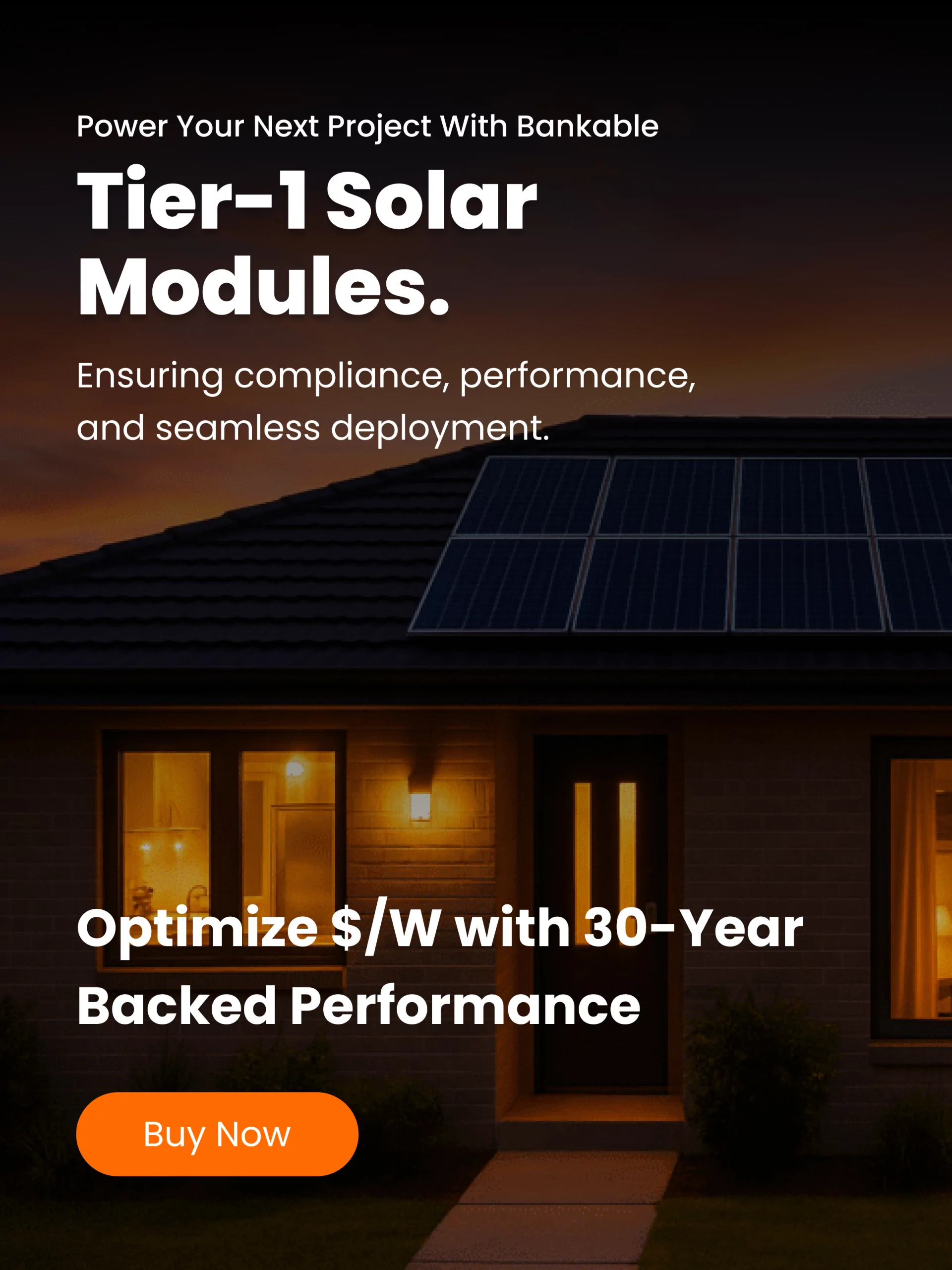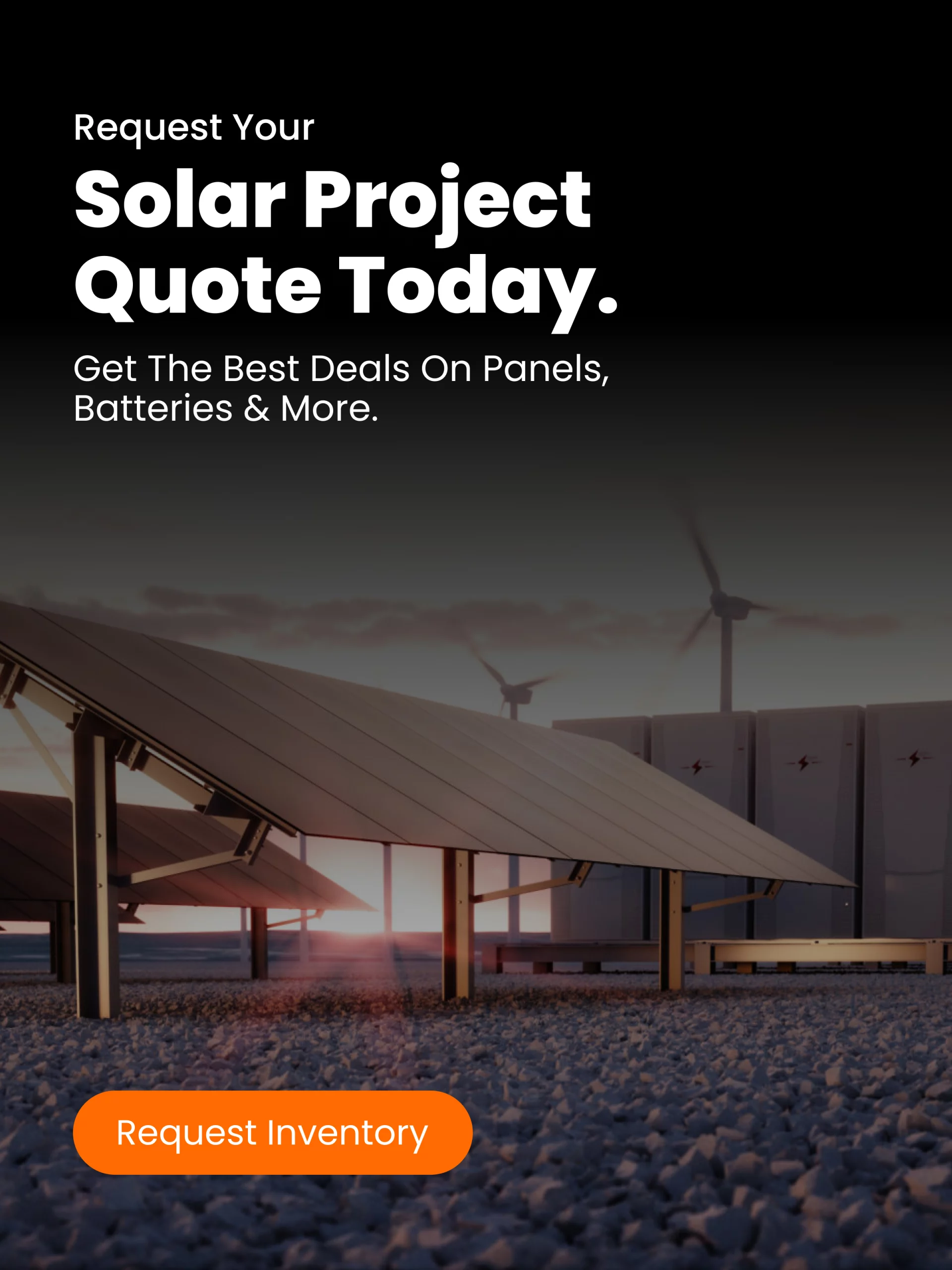When it comes to designing a solar power system, one of the most important technical decisions is how to mount the panels. The mounting system determines how the panels are positioned to capture sunlight and, in turn, how efficiently your system performs.
There are two main types of mounting systems used in modern solar projects: fixed-tilt and tracking systems. Both have distinct advantages and trade-offs, depending on your site conditions, budget, and energy goals.
In this article, we’ll take an in-depth look at how fixed-tilt and tracking systems work, what makes them different, and how to decide which type best fits your solar project , whether you’re a homeowner, business, or utility-scale developer.
Understanding fixed-tilt and tracking systems
Fixed-tilt mounting systems
A fixed-tilt mounting system keeps the solar panels in a single, stationary position. The tilt (the vertical angle of the panels) and azimuth (the compass direction they face) are set during installation based on your latitude and the site’s solar exposure.
Because these panels don’t move, fixed-tilt systems are known for their simplicity, reliability, and affordability. With no motors, sensors, or moving parts, they require minimal maintenance and have fewer potential failure points.
These systems are common on rooftops, smaller ground-mounted arrays, and in regions with consistent sunlight throughout the year.
Tracking solar mounting systems
Tracking systems, on the other hand, are designed to follow the sun’s movement throughout the day. By automatically adjusting the panels’ position, these systems can capture more sunlight and increase total energy production.
There are two main types:
- Single-axis trackers rotate the panels from east to west throughout the day.
- Dual-axis trackers move both east-west and north-south, adjusting seasonally as the sun’s height changes.
While tracking systems typically cost more to install and maintain, they can boost energy production by 20–30% compared to fixed systems, depending on location and system design.
Comparing the advantages of each
Benefits of fixed-tilt systems
- Lower upfront cost: Fixed systems are less expensive to purchase and install because they don’t require motors or tracking mechanisms.
- Lower maintenance: With no moving parts, there’s less that can wear out over time.
- Simpler installation: These systems can be set up more quickly and easily on most roof types or open land.
- Durability: Fixed-tilt arrays are robust and perform well even in areas with high winds or harsh weather.
For these reasons, fixed-tilt systems remain the default choice for most residential and small commercial projects.
Benefits of tracking systems
- Higher energy yield: Because panels follow the sun, they capture more direct sunlight throughout the day, often improving total annual output by 20–30%.
- Improved land use efficiency: Higher energy output per panel means the same site can produce more energy, which can reduce the total land needed for large projects.
- Optimized for variable conditions: Trackers perform particularly well in regions with long days or variable solar angles, such as deserts or areas far from the equator.
Tracking systems are most commonly found in large, ground-mounted commercial or utility-scale solar farms where maximizing energy generation is a top priority.
Understanding the trade-offs
Cost and complexity
Tracking systems require motors, sensors, and control software to function, making them more complex than fixed-tilt setups. As a result, they can cost 10–20% more to install, depending on the scale of the project and site conditions.
For projects with tight budgets or challenging terrain, this added cost may not be justified by the performance gains.
Maintenance and reliability
More moving parts mean more potential points of failure. Trackers need periodic maintenance to keep motors and bearings working smoothly and to prevent mechanical issues.
By contrast, fixed-tilt systems typically run for years with little more than routine inspections and occasional cleaning.
Site suitability
Not every site is suitable for trackers. Systems that move need more open space to prevent panels from shading each other as they rotate. Uneven terrain, steep slopes, or limited land can restrict movement and make fixed systems a better choice.
For rooftop installations, tracking is rarely used because the additional weight and movement can complicate structural integrity and permitting.
Return on investment (ROI)
While trackers often generate more electricity, their higher cost and maintenance can offset those gains. Whether they deliver a faster payback depends on the site’s solar resource, electricity prices, and incentive structure.
For small residential or commercial projects, fixed-tilt systems often have shorter payback times. However, in large-scale projects, especially in sunny regions with high energy prices, the additional yield from tracking systems can lead to stronger long-term returns.
Which system fits your project best?
Residential rooftop systems
For most homes, a fixed-tilt setup makes the most sense. It’s cost-effective, simple, and long-lasting. If your roof faces south or southwest and receives good sunlight, fixed panels can deliver excellent results with little ongoing maintenance.
Commercial and utility-scale projects
For larger, ground-mounted installations, tracking systems often provide better long-term economics. The extra energy yield helps offset the higher installation and maintenance costs. When designed well, trackers can significantly improve output, especially in high-irradiance areas like the American Southwest.
Key factors to consider
When deciding between fixed-tilt and tracking solar mounting systems, evaluate these factors:
- Sunlight profile and climate: Is your site consistently sunny, or does it experience frequent cloud cover or seasonal variation?
- Available space and terrain: Trackers require space to move freely and avoid self-shading.
- Project budget: Can your financing handle a higher upfront cost for potentially greater long-term yield?
- Maintenance capacity: Do you have access to maintenance crews or monitoring systems for moving components?
- System lifespan and reliability: Fixed systems are simpler and often have fewer failure points.
Each factor can influence not just performance but also long-term cost savings.
Typical performance comparison
| Feature | Fixed-tilt system | Single-axis tracking system |
| Average cost | Lower | 10–20% higher |
| Energy yield | Baseline | 20–30% higher |
| Maintenance | Minimal | Moderate to high |
| Best suited for | Rooftops, small sites | Ground-mounted, utility-scale |
| Durability | Very high | High, but depends on mechanical integrity |
These averages are based on data from multiple independent analyses, including the U.S. Department of Energy’s Solar Energy Technologies Office (SETO) and the National Renewable Energy Laboratory (NREL), which have reported similar performance trends between fixed and tracking systems.
Decision-making checklist
Before finalizing your choice, it helps to run through a few critical steps:
- Evaluate your site conditions – Assess land orientation, shading, and local weather data.
- Get professional solar modeling – Use tools like PVsyst or HelioScope to estimate production from both system types.
- Request multiple quotes – Compare detailed bids that include installation, materials, and long-term maintenance.
- Check incentive eligibility – Some local or utility incentives favor one type of installation over another.
- Model payback and ROI – Calculate how long it will take to recover your investment for each option.
- Plan for maintenance – Make sure you have the resources and expertise to maintain whichever system you choose.
Final thoughts
Both fixed-tilt and tracking solar mounting systems are valuable technologies with proven performance. The best choice isn’t about which is newer or more advanced, it’s about which system fits your specific needs.
If your priority is affordability, low maintenance, and simplicity, fixed-tilt systems are ideal. If you’re developing a large-scale, ground-mounted system and want to maximize energy generation and land efficiency, a tracking system may offer the best long-term returns.
Ultimately, the decision should be grounded in accurate modeling, professional consultation, and a realistic assessment of your site and goals. When chosen wisely, the right mounting system can help you achieve optimal performance, reliable returns, and long-term sustainability from your solar investment.



